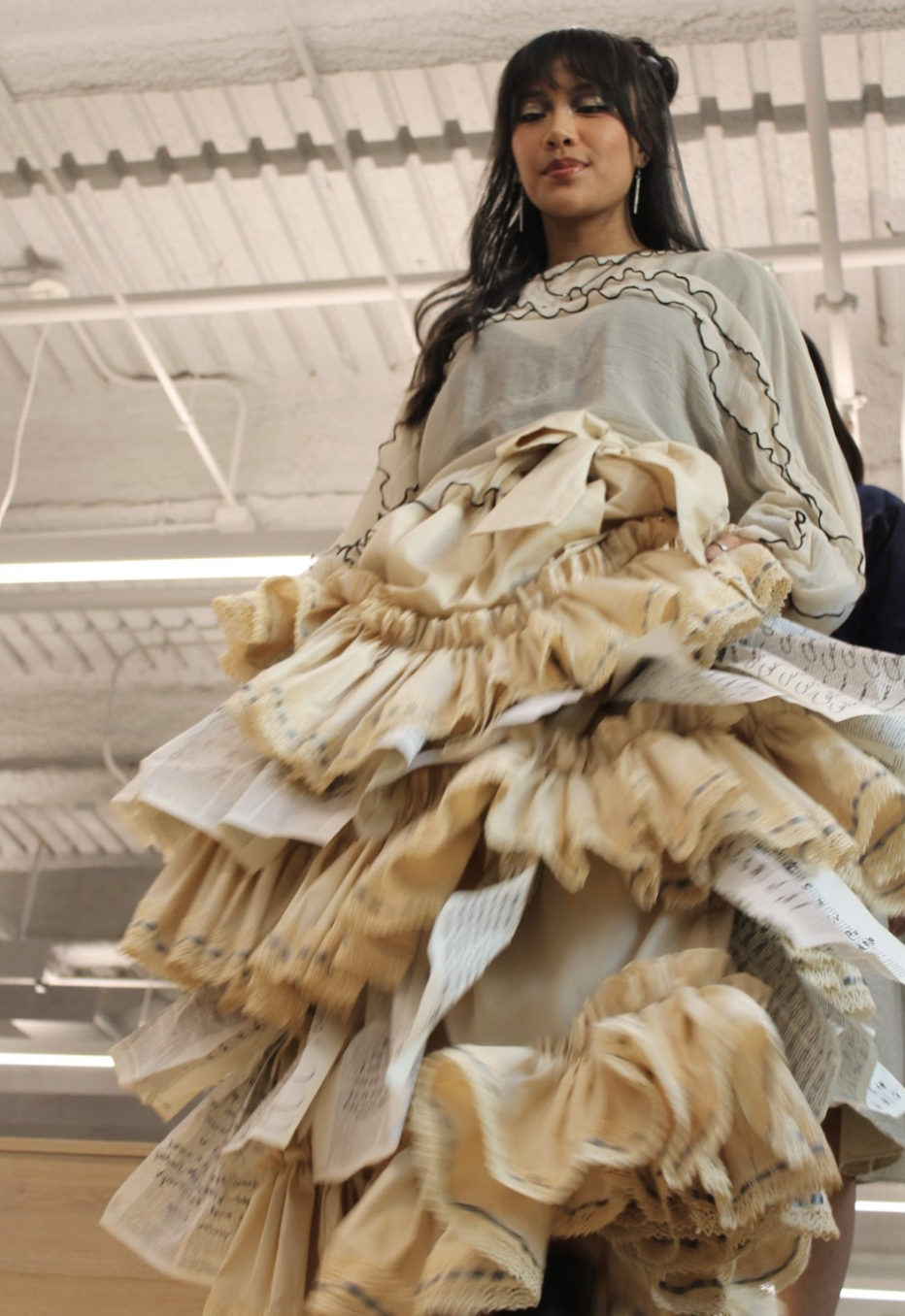On April 3, a lively crowd of curious students gathered at Meantime at The Junction for a collaborative fashion exhibit titled “Threads of the Mind.” The event was dedicated to exploring mental health and neurocognitive conditions through art and design.
Coulture partnered with the UNC-Chapel Hill club Art and The Brain to host the event. The student group, funded by Innovate Carolina, is dedicated to fostering conversations about the intersection between creativity and psychology.
Over 16 designers and models from around the Triangle participated, with each look using textiles, iconography and historical narratives to explore the complexities of neurological disorders.
Vice president and financial chair of Art and The Brain, Maren Molinaro, explained that fashion provides a comfortable platform to discuss mental health.
“Mental health is normally thought about as a problem that needs to be fixed, but through fashion it becomes something you want to look at, something you want to bring attention to,” said Molinaro.
Art and The Brain hosts monthly seminars, which discuss famous artists with neurological and neuropsychiatric disorders and how art has contributed to the development of neurology and medicine.
Collaborating with Coulture provided the club with an interactive and engaging space, which Molinaro described as the best way to conclude the semester.
“A lot of these designers had no experience…They really gave in and did something that was completely out of their comfort zone. I am so proud of them,” she said.
Designer Ava Mayo’s work delves into obsessive-compulsive disorder, exploring the relationship between OCD behaviors and religious practices.
“Before there was medical literature, there’s religious literature dating back to the 14th century,” she said. “You have people with written recordings of obsessive compulsive behavior and essentially, a consuming need to pray, to repent. Everything you do, you’re analyzing whether or not it’s a sin.”
According to Mayo, this behavior is commonly seen today, especially in children developing OCD.
“People think it’s just a compulsion to stay clean, but I think there’s also a compulsion to stay pure,” she added.
The dress she created is made of pages of the Bible, signifying how for those with religious OCD, faith consumes their every action, behavior and thought.
The sheer tulle used in the veil, bodice and skirt emulates how someone with this condition views the world through a warped perception. The Bible pages themselves are also bending and curling, reflecting this disparity between interpretation and reality. The model wears white gloves and socks, symbolizing purity culture. A dove-head piece rests at the model’s head representing the Holy Spirit.
“I lost a friend, not just because she had OCD, but she did suffer from OCD,” Mayo said. “I lost her to suicide. I wanted to pay homage to her. I think there’s a lot of misconceptions about how OCD actually functions and how it is symptomatic in people. This is an angle, an element, that is a lot less considered or even acknowledged when people think of OCD.
Another designer, Doni Palma-Roberto, focuses their work on schizophrenia and how it manifests in indigenous communities. They designed two separate looks for the exhibition.
“I wanted to highlight the beauty that they see in these symptoms,” they said.
In both of their looks, Palma-Roberto used continuous patterns and colors to represent the disorganized thinking patterns associated with schizophrenia. A silver coil, whirling around one model’s upper body and around his ears, visualizes these spiraling thoughts. The other model with long hair wears braids, a nod to Palma-Roberto’s tribe in Mexico and the braids their mom would do on their own hair. The designer was also inspired by the frequency aspects of schizophrenia, which are related to the vision and sound symptoms associated with the condition, represented through airier garments.
Designer Alyssa Wang chose to focus on the complexities of bipolar disorder. For her look, she decided to reference what she imagined an upper-class fashion model or socialite might have looked like historically.
“Before mental health was brought to awareness, a lot of women were put in psych wards and lobotomized for any mental disorder, especially bipolar disorder,” said Wang. “They were seen as hysterical or rebellious against their husbands, and they were just sent away to be fixed.”
The black dress, gloves and hat resemble an 18th-century high-class outfit. Bright reds and blues on the bodice, along with orange on the inside of the skirt, illustrate the manic and depressive stages associated with bipolar disorder, while also representing pieces of a woman with bipolar disorder’s true self. The look, as a whole, suggests that a woman with bipolar disorder can still be considered “put-together” and fit the beauty standard. Gemstones glitter on the veil symbolize that she is a perfect human being, with all components of herself intact, and should not feel pressured by society to hide herself or her condition.
Photos by Savannah Matthews

